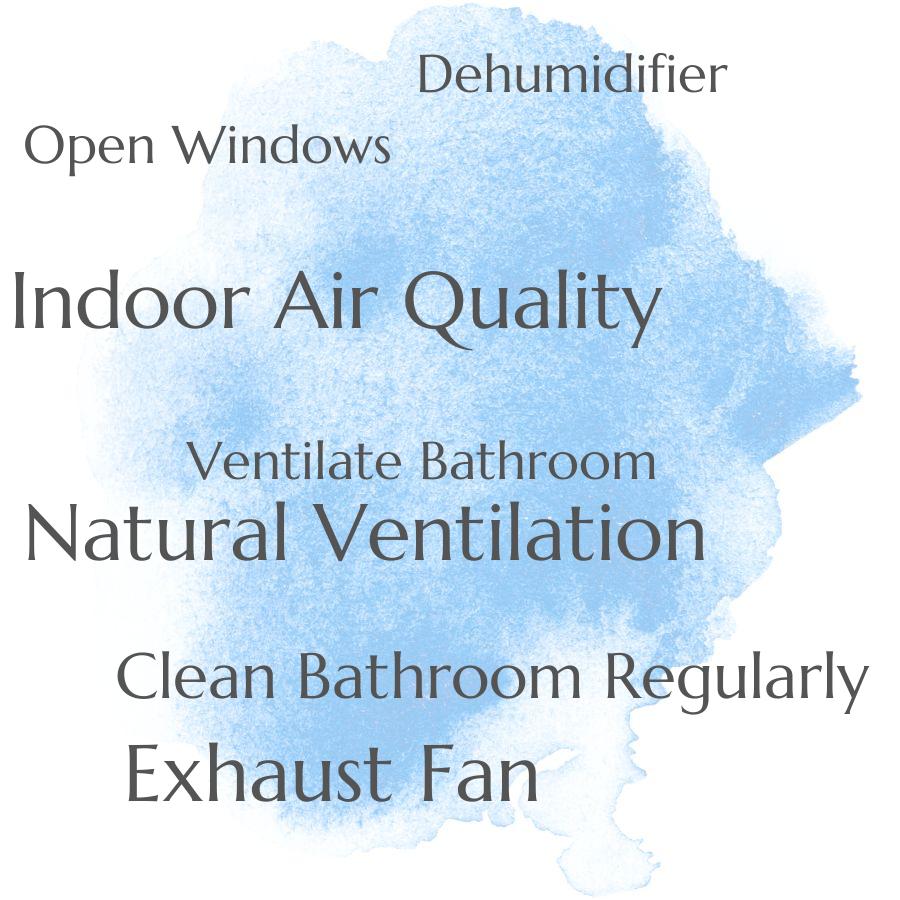The best ways to improve the indoor air quality in a bathroom are by installing an exhaust fan, using natural ventilation when possible, and ensuring that all surfaces are kept clean and dry.
Having poor indoor air quality in your bathroom can be a major health hazard, as the humidity and moisture levels can cause mold and mildew to grow. To improve the air quality of your bathroom, proper ventilation is essential.
In this blog post, we will discuss some of the best ways to ventilate a bathroom in order to improve indoor air quality. We will cover topics such as using exhaust fans, opening windows, and using dehumidifiers.
Read on to learn more about how you can make sure your bathroom is getting proper ventilation!
Install an Exhaust Fan

An exhaust fan works by drawing out stale, humid air from the bathroom and replacing it with fresh, clean air from outside. This helps reduce moisture buildup in the room, which can lead to mold growth and other health hazards.
An exhaust fan can help remove odors that may be present in the bathroom due to cleaning products or other sources. Installing an exhaust fan is relatively easy; most models come with instructions for installation and require only basic tools such as a screwdriver or drill.
Use Natural Ventilation
It involves using natural elements such as windows, vents, and fans to draw fresh air into the room while pushing stale air out. This helps reduce humidity levels and remove odors from the space.
Natural ventilation also reduces the need for mechanical systems that can be costly to install and maintain. To maximize natural ventilation in a bathroom, open windows when possible or use exhaust fans with timers that turn on during peak hours of use.
Installing an operable skylight can help bring in additional fresh air while providing extra light into the space.
Open Windows When Possible
This method of ventilation helps to reduce humidity levels and remove odors, as well as allowing fresh air into the room. Opening a window also helps to reduce mold growth by reducing moisture levels in the air.
Opening a window can help to reduce airborne pollutants such as dust and pollen that may be present in the home. When possible, it is recommended that windows be opened for at least 15 minutes each day or whenever there is an increase in moisture or odors present in the bathroom.
Use a Dehumidifier
A dehumidifier works by removing excess moisture from the air, which helps reduce humidity levels in the bathroom. This can help prevent mold growth, as well as reduce odors caused by dampness.
It can help keep surfaces dry and free of condensation, which can lead to mildew or other bacteria growth. Dehumidifiers come in various sizes and capacities so you can choose one that fits your needs and budget.
They are also relatively easy to install and maintain, making them an ideal solution for improving ventilation in bathrooms.
Clean Bathroom Regularly
This involves removing dust, dirt, and other debris from surfaces such as countertops, floors, walls, and fixtures. Vacuuming or sweeping the floor can help remove any particles that have settled on it.
Wiping down surfaces with a damp cloth or disinfectant can help reduce bacteria and mold growth. Regularly replacing shower curtains and bath mats can help keep them free of mildew buildup.
Using an exhaust fan when showering or bathing will help remove moisture from the air which helps prevent mold growth in hard-to-reach places like corners and crevices.
Replace Air Filters Often
Air filters are designed to capture dust, dirt, pollen, and other airborne particles that can cause poor air quality. By replacing these filters regularly, you can ensure that your bathroom is free from pollutants and has clean air circulating throughout the space.
This will help reduce odors as well as prevent mold growth due to excess moisture in the room. Replacing your air filter often will also help keep your HVAC system running efficiently by preventing it from becoming clogged with debris.
Seal Any Cracks or Gaps in Walls and Ceilings
These cracks and gaps can allow moisture, dust, and other pollutants to enter the room, leading to poor indoor air quality. To seal these openings, use caulk or weatherstripping around windows and doors, as well as along baseboards and wall corners.
Check for any holes in the ceiling or walls that may need patching with spackle or drywall compound. By sealing these areas off from outside air sources, you can help ensure that your bathroom has clean air circulating throughout it.